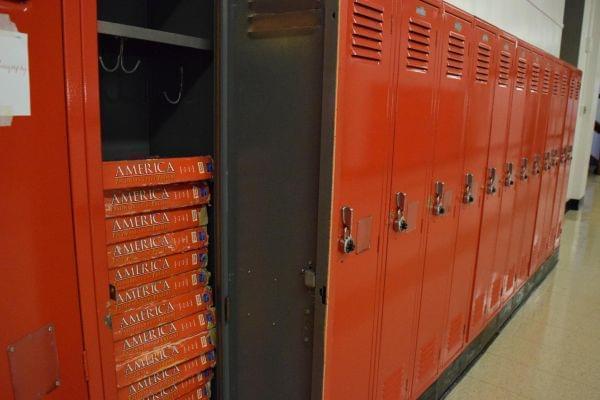2020 Could Have School Districts Seeing Red

School districts in Illinois could be in for a big hit in the year 2020. Carter Staley/NPR Illinois
Between a new state pension plan and Gov. Bruce Rauner's amendatory veto of the Democrats' school funding plan, some school districts would be in for a big hit in July 2020. The two changes would have a particularly significant impact on districts with high rates of teacher turnover and declining enrollment.
For the past 75 years, Illinois has failed to make sufficient contributions to its Teachers Retirement System. As a result, TRS has a massive unfunded liability.
That's one reason the state keeps creating new retirement plans. The latest, called Tier 3, combines a traditional pension system with a 401k-style account.
TRS spokesman Dave Urbanek says it will give new teachers a choice.
"As soon as Tier 3 is implemented, all new TRS members will be in Tier 3. And then they will have an option to become Tier 2 members if they wish," he says. "At the same time, all existing Tier 2 members will be able to switch to Tier 3."
The state will kick in 2 percent for Tier 3 teachers — for a couple years. But beginning in fiscal year 2021 (July 1, 2020), that cost shifts to local school districts.
Officials from the state's seven retirement systems are currently meeting to finalize the Tier 3 plan. Once they do, it will have to be approved by the IRS.
Will it be an improvement over Tier 2? Urbanek says that has to be determined on an individual basis.
All Illinois school districts (except Chicago Public Schools, which pays its own teacher pensions) currently pay 0.58 percent of each new teacher’s salary to TRS. That’s true for teachers in Tiers 1 and 2. On July 1, 2020, local districts will become responsible for paying that 0.58 percent plus an additional 2 percent into TRS for all teachers in Tier 3.
“Obviously, this is an added cost for districts,” Urbanek says. “The state is essentially getting out of the business of putting money into the defined benefit portion of teacher pensions.”
This shift will have the most profound effect on districts with high turnover rates for teachers — typically districts that have lower teacher wages, located near districts that offer higher pay.
The effect would be amplified by Gov. Bruce Rauner’s amendatory veto to Senate Bill 1, the “evidence-based” school funding plan sponsored by Democrats. The evidence-based model bases state funding on each school district’s “adequacy target,” which is its cost of doing business. Rauner’s amendatory veto deletes language in SB1 that would include pension costs in a school district’s adequacy target.
At the same time, Rauner’s AV would also sunset the per-district hold-harmless provision and switch after two years to a per-pupil hold-harmless, effectively penalizing districts with declining enrollment. So in the summer of 2020, school districts with high teacher turnover and declining enrollment would suffer a double-whammy.
Links
- Urbana School Supt. & Local Democratic Lawmakers Call For Override To Ensure School Funding
- Rauner Defends SB1 Changes Affecting School Districts With TIF Districts Or Tax Caps
- School Funding Negotiations Continue; Flood Risk Across Illinois; Corporate Espionage in the Midwest
- Time Running Short As School Funding Fight Continues
- School Funding Depends On Compromise Or 36+71
- Rauner Vetoes Portions Of Public School Funding Bill
- School Funding Special Session Keeps Legislators & Gov. At Odds
- Rauner Calls School-Funding Special Session

